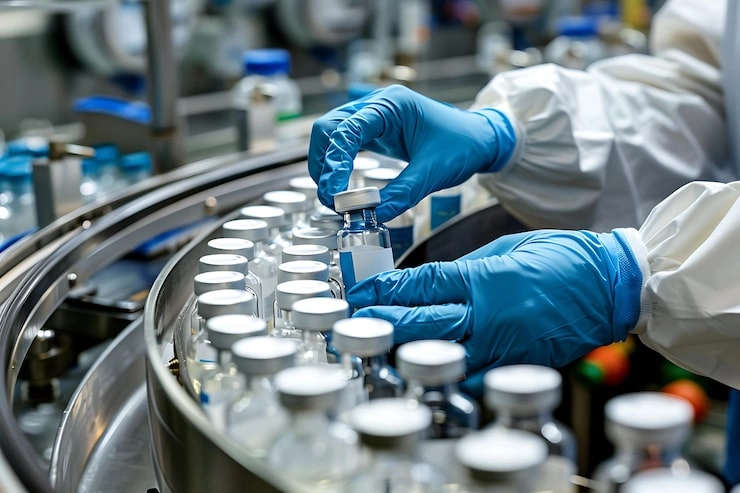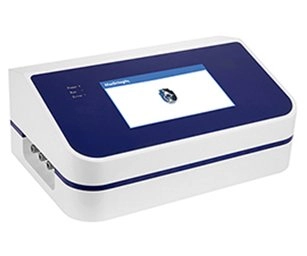Overview of Pharmaceutical Filter Integrity Testing Methods
Overview of Pharmaceutical Filter Integrity Testing Methods

Filter integrity testing in pharma holds a key spot in keeping sterile drug products clear of microbial contamination. This matters a lot in aseptic manufacturing processes. There, sterilizing-grade filters act as the final barrier.
Role of Filters in Sterile Pharmaceutical Manufacturing
Sterile filtration is common for injectable drugs, ophthalmic solutions, and biopharmaceuticals. In making these items, filters such as 0.22-micron membrane filters play a big role. They remove bacteria and particulates. So, checking their performance with integrity testing before and after use is vital. It helps keep product sterility strong.
Regulatory Requirements for Integrity Testing
Global regulatory bodies like the FDA, EMA, and the NMPA (National Medical Products Administration) of China require filter integrity testing. This fits into Good Manufacturing Practice (GMP) compliance. The testing methods must meet FDA and GMP rules. They also follow standards in the USP and EP. First of all, these tests make sure filters hit performance goals. What’s more, they prevent any break in sterility during production.
Consequences of Filter Failure in Drug Production
A faulty filter can cause microbial contamination. That leads to product recalls. It might bring regulatory actions. Or worse, it could harm patients. Besides, it stops production lines. And it hurts a company’s reputation. Thus, strong filter integrity test procedures are more than just rules. They’re a safety must.
Key Methods of Filter Integrity Testing
Several proven methods check filter integrity. They depend on filter type and use. Let’s look at them one by one.
Bubbelpunttest
This is a well-known way for hydrophilic membrane filters.
Principle and Procedure: The tester adds rising gas pressure to the upstream side of a wet filter. Then, the pressure where a steady stream of bubbles shows up downstream marks the filter’s biggest pore size. The Young-Laplace equation guides this. It links the needed pressure to push liquid from a pore with the pore’s width and the liquid’s surface tension.
Applications and Limitations: It’s great for 0.22-micron filters in sterile filtration. But it works less well for hydrophobic membranes. Or for tricky shapes where wetting might not be even.
Diffusion Test (Forward Flow)
This method checks gas diffusion through a wet membrane. It uses steady pressure below the bubble point.
How It Works: You apply constant pressure. Any gas flow spotted downstream comes from diffusion through liquid-filled pores in a good membrane. Too much flow points to flaws. Like big pores or breaks.
Suitable Use Cases and Considerations: It’s perfect for large hydrophilic cartridge filters after sterilization. That’s when you need non-destructive checks. A big thing to watch is the “masking effect.” Product leftovers, such as proteins, can clog pores partly. So, that gives fake low diffusion numbers. And it might lead to a wrong pass result.
Pressure Hold Test (Decay Test)
This approach watches pressure drop over time. It happens in a closed setup upstream of the wet filter.
Description of the Method: You add air or nitrogen to one side of a wet filter. Then seal the system. Measure any pressure fall over time. That shows leaks or pore issues.
Advantages and Considerations: It’s easy to do. Yet it might miss tiny leaks compared to diffusion tests. Still, it gives useful clues. Especially when paired with other checks.
Water Intrusion Test (WIT)
This one fits hydrophobic filters mainly. Think PTFE membranes that push water away.
Application for Hydrophobic Filters: WIT sees if water slips through a dry hydrophobic membrane under set pressure. If water flows, it means damage or wrong-size pores.
Benefits and Constraints: It’s non-destructive. Good for vent and gas filters. But you need tight control on things like temperature. That ensures right results.
Factors Influencing the Selection of a Testing Method
Picking the right method relies on key factors. Several come into play.
Type of Filter Membrane (Hydrophilic vs. Hydrophobic)
Hydrophilic membranes suit bubble point or diffusion methods best. Hydrophobic ones need water intrusion testing. Simple as that.
Product Compatibility and Process Conditions
If the product has solvents or proteins, they change how the membrane wets. So, you might pick other methods. Or add flushing steps. That keeps things accurate.
Vereisten voor naleving van regelgeving en validatie
Any method you choose must pass GMP validation. Document IQ, OQ, and PQ fully. Thus, compliance stays solid.
Pre-use Post Sterilization Integrity Testing (PUPSIT)
PUPSIT checks filters after sterilization but before use. It’s a core GMP step for aseptic work.
Purpose of PUPSIT in Aseptic Processing
It proves the sterilization—like autoclaving or steaming-in-place—didn’t harm the filter. This happens right before the filter touches the sterile drug product. So, patient safety gets a boost.
Implementation Challenges
PUPSIT is a big regulatory push. But fitting it into closed, sterile setups is tough. You can’t risk breaking the aseptic zone. So, smart design and validation help. Industry groups still talk risk-based ways. They’re hunting the best paths forward.
Best Practices for Conducting Reliable Integrity Tests
Reliable test results need steady habits. Cover people, gear, and steps.
Equipment Calibration and Maintenance
Calibrate gear often with traceable standards. That keeps measurements spot-on. Do preventive upkeep too. Check seals, valves, sensors, and tubes. Follow SOPs closely.
Operator Training and SOPs
Train staff well. They must stick to validated SOPs each time. From setup to logging results. This cuts human slip-ups big time.
Troubleshooting Common Issues
Odd readings? They often come from bad wetting, temp shifts, or tube leaks. Use a reference filter. It spots if it’s the machine or the person at fault.
MedIntegrity: Advanced Solutions for Pharmaceutical Quality Control
Solid practices depend on good tools too. Not just steps. Modern automated filter integrity testers cut errors. They guard data. And they meet tough global rules. Here, expert providers step in. They tackle these issues head-on.
MedIntegrity, a U.S.A.-based company, focuses on precise testing gear and supplies for pharma. We’re a helpful partner. We offer fixes for testing, issue spotting, and lab work.
Highlighted Products for Filter Integrity Testing

MedIntegrity V8.0 Filter Integrity Tester: This is a newer model with an upgraded audit trail function to meet the latest data integrity requirements. It features a 10-inch color touch screen, an optimized Linux system, and covers all existing test methods for filter integrity. It is designed to meet offline and online testing needs with high-accuracy pressure sensors.
MedIntegrity V6.5 Filter Integrity Tester: This model also covers all existing filter integrity test methods and was the first in the domestic market to implement integrity testing for ultrafiltration systems. It is compliant with FDA 21 CFR PART 11, featuring scientific authority management with passwords, permissions, and electronic signatures. The V6.5 can store up to 120 groups of preset solutions to simplify and intelligentize the testing process.
Ensuring Compliance: Built-in audit trails help. So do multi-level user access and electronic signatures. Our systems follow FDA 21 CFR Part 11 fully. Data stays safe. Audits get easier.
Enhancing Accuracy: High-precision sensors shine. Validated algorithms too. They give steady, repeatable results for Bubble Point, Diffusion, and Water Intrusion tests. No fake outcomes from masking or weather changes.
Improving Operational Efficiency: The user interface is simple. Programmable SOPs save time. Integrated thermal printers wrap it up. All this lowers errors in key spots like PUPSIT.
Other big items? Total Organic Carbon (TOC) Analyzers and Glove Integrity Testers. All fit GMP setups.
Commitment to Quality, Compliance, and Customer Support
Our testing methods meet FDA, GMP, USP, and EP needs. Global compliance is locked in. We serve over 40 countries with distribution and service. Customers get quick tech help. And solid application know-how.
Summary
Filter integrity testing is a must in sterile drug making. It guards product safety. And it hits regulatory marks. Many proven techniques exist. Like bubble point, diffusion, and water intrusion tests. Makers pick what fits filter type and process best. Using top automated gear, such as MedIntegrity’s, matters a ton. It brings top accuracy, repeats, and rule-following. In the end, this drives great work in pharma plants everywhere.
FAQs
Q1: What is the most common method used for pharmaceutical filter integrity testing?
A: The Bubble Point Test tops the list. It links gas breakthrough pressure straight to the largest pore size. That makes it super useful for checking 0.22-micron sterilizing-grade filters.
Q2: Is PUPSIT mandatory according to current regulations?
A: Agencies like the FDA and EMA push hard for pre-use post-sterilization integrity testing (PUPSIT). It’s key in aseptic work. Ensuring filter health before product touch protects patients first.
Q3: How can automated filter integrity testers help reduce human error?
A: Systems like MedIntegrity’s cut hands-on work. They standardize steps. Pre-set parameters guide wetting. Auto-recording with audit trails fights operator differences. And doc slip-ups drop way down.








